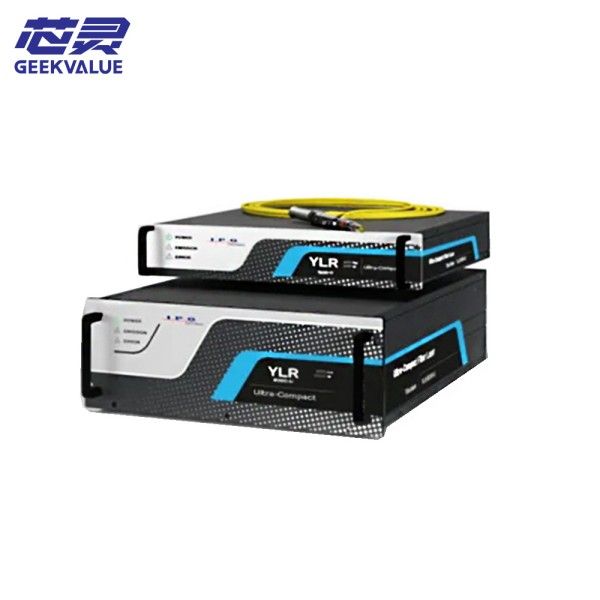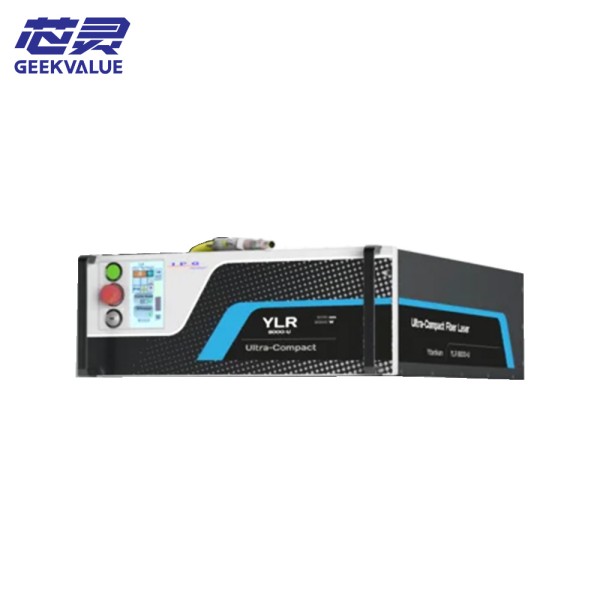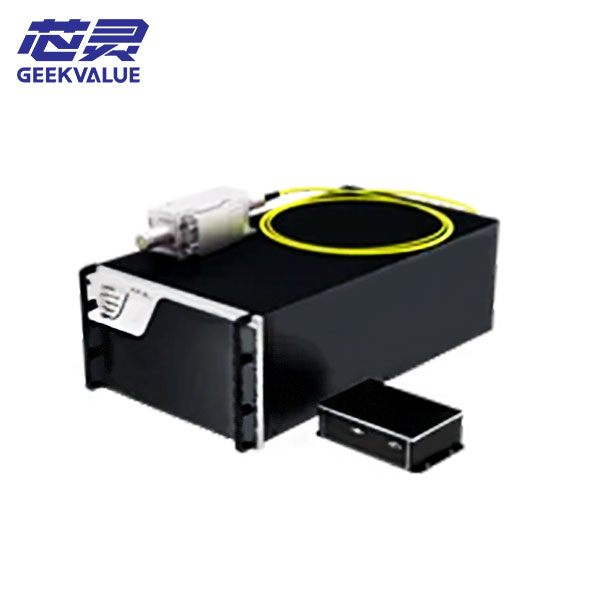Mu mbeera ya leero ey’okukola ebintu mu ngeri ey’amagezi, IPG Lasers zinyweza ekifo kyazo ng’ekipimo ky’obutuufu bwa fiber-laser, okuwangaala, n’okukola obulungi. Ka obe ng’osala ekyuma eky’omutindo gw’emmotoka, micro-welding intricate medical components, oba okussaako akabonero ku byuma ebikozesebwa mu byuma, okutegeera obusobozi obujjuvu obwa IPG laser kiyinza okusumulula omugaso ogw’ekitalo mu nkola yo. Mu kitabo kino ekisembayo, tojja kuzuula misingi gya tekinologiya wa layisi ya IPG zokka wabula n’enkulaakulana ezisembyeyo, emitendera gy’okukozesa, n’engeri y’okulondamu eky’okugonjoola ekisinga obulungi ku bizinensi yo.

IPG Laser Kiki?
Layiza ya IPG nkola ya layisi ya fiber ekola obulungi eyakolebwa yinginiya wa IPG Photonics, omukulembeze mu nsi yonna mu tekinologiya wa layisi eyesigamiziddwa ku fiber ey’amaaso. Okwawukana ku layisi ez’ennono eza CO2 oba ez’embeera enkalu, layisi za IPG zikozesa obuwuzi bw’amaaso obuteekeddwamu ytterbium ng’ekintu eky’amagoba. Pump diodes ziyingiza amasoboza mu fiber, ne zikola beam etunuuliddwa ennyo, eya mode emu nga erina omutindo gwa beam ogw’enjawulo.
Ebitundu Ebikulu (Okwongerako okutegeera n'ensengeka y'essasi)
Diodes za Pampu:Diodes ezikola obulungi ennyo ezituusa ekitangaala kya pampu.
Ebiwuziwuzi Ebirimu Ytterbium:Active gain medium egaziya ekitangaala kya layisi.
Ebisengejja ebiyitibwa Fiber Bragg Gratings (FBGs): .Endabirwamu z’amaaso ezigatta ezikola ekiwujjo kya layisi.
Fiber efuluma:Etuusa ekikondo ku mutwe gw’okulongoosa nga tekifiirwa kitono.
Olw’enzimba yazo eya fiber zonna, layisi za IPG zimalawo ensonga z’okukwatagana, zanguyiza okunyogoza, era zikendeeza ku bwetaavu bw’okuddaabiriza bulijjo.

Ebipya Ebipya mu Tekinologiya wa IPG
Mu 2024, IPG Photonics yaleeta ennongoosereza ennene mu bintu byayo byonna:
YLS-RI Omusinde:Ewa okukyusakyusa ebikondo mu bwangu ku mirimu gy’okukola eby’omugatte.
Sensulo za Smart ezigatta:Okulondoola ebikondo mu kiseera ekituufu kuyamba okuziyiza okwonooneka kw’ebbugumu era kisobozesa okuddamu kw’enkola.
Layisi za Green ne UV Fiber:Ssobozesa micro-machining y’ebintu ebitangaavu nga endabirwamu ne polymers.
Enkulaakulana zino zisobozesa abakola ebintu okunoonyereza ku mbeera empya ez’okukozesa, okukendeeza ku miwendo gy’obulema, n’okugaziya okukwatagana kw’ebintu.
Empagi Nnya ez'enkizo ya IPG Laser
Omutindo gwa Beam ogwa waggulu ennyo
Layisi za IPG zikola ebikondo ebituukiridde kumpi (M2 ≈ 1.1), ekisobozesa obutuufu ku ddaala lya micron. Obutuufu buno buvvuunulwa mu kusala okuyonjo, okunyweza emisono gya weld, n’ebitundu ebitono ebikoseddwa ebbugumu.Okukekkereza Amasoboza Okutaliiko Kufaanana
Efficiencies za wall-plug zitera okusukka 40%, ekisala nnyo ku ssente z’amasannyalaze n’okukosa obutonde bw’ensi bw’ogeraageranya ne CO2 laser.Enzimba ya Modular
Ensengeka ya MOPA ewagira ensengeka z’amaanyi ezisobola okulinnyisibwa-okulongoosa kwangu nga kwongerako modulo za amplifier. Oba okola ne 200 W oba 20 kW, waliwo ekkubo erigenda mu maaso.Okuddaabiriza Okutono, Obulamu Obuwanvu
Nga MTBF zirina ebipimo ebisukka mu ssaawa 50,000 ne dizayini ezinyogoza empewo, layisi za IPG zikendeeza ku budde bw’okuyimirira n’obwetaavu bw’okuweereza obutasalako.
Layisi za IPG we ziyaka: Ebikulu Ebikozesebwa
Okusala ebyuma ebiyitibwa Sheet-Metal
Asala ekyuma ekitali kizimbulukuse okutuuka ku mm 30 mu buwanvu nga precision ate nga ntono taper. Kati yeeyongera okukozesebwa mu kusala ebitundu bya bbaatule ne EV.Okuweta & Okusiba
Etuusa welds enfunda, enzito ku sipiidi ya waggulu. Ya bulijjo mu kukola e-mobility, aerospace, n’ebikozesebwa.Micro-Machining & Ebyuma ebikozesebwa mu byuma bikalimagezi
Esobozesa okusima layisi wansi wa 50 μm. Ebika ebipya ebya femtosecond bisobozesa okulongoosa endabirwamu ne ceramics nga tebirina microcracks ntono.Okussaako obubonero & Okuyiwa
Ekwata obubonero bwa layisi obw’amaanyi, obw’enjawulo ennyo ku byuma, obuveera, n’ebintu ebisiigiddwa.Okunoonyereza & Enkulaakulana
Kirungi nnyo mu spectroscopy, quantum optics, n'okukola micro-additive nga zirina pulse tunability.EKIPYA: Okukola Ebintu Ebigattibwako (Okukuba ebitabo mu 3D)
Layisi za IPG kati zikola kinene mu kuyungibwa kw’ekitanda kya pawuda n’okuteekebwa kw’ebyuma bya layisi, nga ziwa okufuga kw’amasoboza okutuufu okukola layeri ku layeri.
Okulonda IPG Laser Entuufu ku Byetaago Byo
Bw’oba weetegereza enkola za layisi za IPG, lowooza ku nsonga zino:
Omutendera gw’Amaanyi
Amaanyi Amatono (10 W–200 W): Kirungi nnyo okukola micromachining, obubonero, n’okuweta obulungi.
Mid-Power (500 W–2 kW): Ekola ebintu bingi okusala ebyuma ebigonvu okutuuka ku bya wakati n’okukola okwa bulijjo.
Amaanyi amangi (4 kW–20 kW+): Etuukira ddala ku kusala pulati enzito, okuweta mu kitundu ekinene, n’okufulumya amaanyi amangi.
Ebintu Ebikwata ku Pulse
CW (Continuous-Wave): Esinga ku mirimu gy’okusala n’okuweta egyetaagisa okuyingiza ebbugumu eritakyukakyuka.
Q-Switched, MOPA Pulsed: Ewa pulse-on-demand okussaako obubonero n’okusima micro-drilling.
Ultrafast (Picosecond/Femtosecond): Okusobola okukyusakyusa ebbugumu okutono mu micromachining n’okunoonyereza.
Beam Delivery & Okussa essira ku by'amaaso
Fixed-Focus Heads: Tezigula ssente nnyingi era zeesigika mu kusala ku kitanda ekipapajjo.
Galvanometer Scanners: Sikaani ez’amangu, ezisobola okuteekebwa mu pulogulaamu okusobola okussaako obubonero, okuweta, n’okukola eby’okwongerako.
Robotic Fiber Heads: Ekyukakyuka nnyo nga ziteekeddwa ku robots ezirina ensengekera nnyingi okusobola okuweta oba okusala mu ngeri ya 3D.
Okunyogoza & Okuteeka
Air-Cooled Units: Okuteekebwako okusinga okwangu, okusaanira emitendera gy’amaanyi okutuuka ku ~2 kW.
Water-Cooled oba Closed-Loop: Yeetaagibwa ku maanyi agasingako; kebera obusobozi bw’ekifo obw’okunyogoza n’ekigere.
Sofutiweya & Ebifuga
Noonya enkola z’abakozesa ezitegeerekeka obulungi, okulondoola enkola mu kiseera ekituufu, n’okukwatagana n’enkola zo eza CAD/CAM oba robotic. Sofutiweya za IPG ez’obwannannyini zitera okubeeramu enkola ezizimbibwamu n’okukebera okusobola okulongoosa enteekateeka n’okuddaabiriza.
Amagezi ku kugatta okutaliimu buzibu
Okuteekawo Omukutu:Kuuma embeera z’enfuufu entono. Layisi za fiber zigumira obucaafu obusingawo naye nga zikyaganyulwa mu buyonjo.
Okugoberera obukuumi:Kozesa amaaso agakakasibwa, ebisiba, n’ebiziyiza. Okukola okubala ebitabo buli kiseera.
Obuwagizi bw'abatunzi:Londa abakozi ba IPG abakkirizibwa okuteeka, okutendekebwa mu kifo, n'okuweereza amangu.
Okuddaabiriza mu ngeri ey’okuziyiza:Kuuma sipeeya nga pump diodes ku mukono era lowooza ku ndagaano ya service for minimal downtime.
Amagezi ku kugatta okutaliimu buzibu
Okuteekateeka Ekifo: Kakasa nti empewo eyingira bulungi n’okufuga enfuufu; layisi za fiber zigumira obucaafu bungi okusinga layisi za CO2 naye nga zikyaganyulwa mu mbeera ennyonjo.
Ebikozesebwa mu by’okwerinda: Teeka ebizibiti, ebyuma ebiyimiriza ebikondo, n’amaaso agatuufu agakuuma layisi. Bulijjo okubala ebiragiro by’obukuumi.
Training & Support: Mukwano n’abagaba IPG abakkirizibwa abasobola okuwa okutendekebwa mu kussaako, okutandika okukola, n’okuddukanya emirimu.
Spare Parts & Service Contracts: Ebiyungo ebisumuluzo ne dayodes mu sitoowa; lowooza ku ndagaano y’obuweereza okusobola okuddamu amangu n’okuziyiza okuddaabiriza.

Nga amakolero bwe geetaaga okukola ebintu eby’amangu, ebiyonjo, era ebituufu, layisi za IPG zikyagenda mu maaso n’okuteekawo omutindo. Omutindo gwazo ogw’ebikondo ogutaliiko kye gufaanana, okukozesa obulungi amaanyi, n’okukyukakyuka bizifuula ezitali za bulijjo mu bitundu byonna —okuva ku makolero amazito okutuuka ku R&D mu by’obujjanjabi.
Okussa ssente mu IPG fiber-laser solution si kugula kwokka, wabula enkola ey’obukodyo eri okufulumya okwetegefu mu biseera eby’omu maaso. Mukwate n’abakugu abatuufu era osumulule obusobozi obw’amazima obw’obuyiiya bwa layisi.

